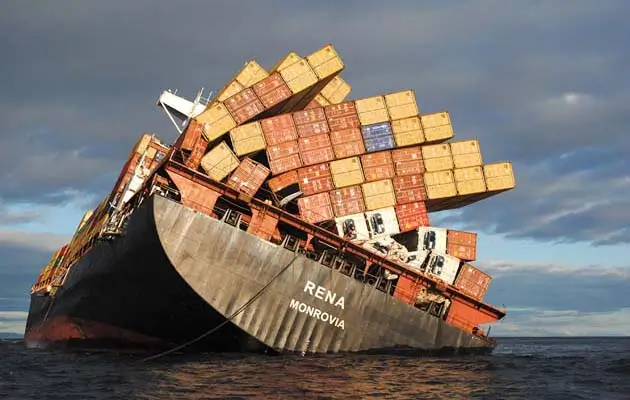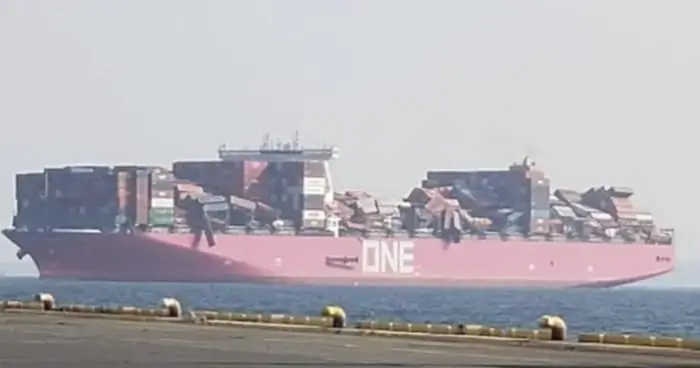New Study Examines how the Weather Affects the Stability of Container Stacks

16th February 2024
Table of Contents
Report: Study on how Container Stacks stability affected by Weather
The global shipping industry hums with the movement of millions of containers, each stacked precariously atop vessels traversing stormy seas. While securing these metal boxes seems straightforward, a new study by Norwegian marine insurance group Gard reveals a hidden threat weather’s significant impact on container stack stability. This research could have major implications for safety, cargo security, and environmental protection.
Navigating a Sea of Risk
A New Study Examines How the Weather Affects the Stability of Container Stacks delves into the real and present danger weather poses to container stacks. Every year, thousands of containers are lost at sea, with rough weather being a major culprit. These incidents not only result in financial losses but also endanger crew lives and pose environmental risks. Understanding how weather affects stack stability is crucial for mitigating these risks and improving overall safety.

Data Dive for Stability
Employing a combination of real-world data analysis and sophisticated computer simulations, the Gard team assessed the stability of container stacks under various weather conditions. Their findings paint a concerning picture:
- Weather’s Wrath: Wind speed and wave height play a significant role. Stacks become increasingly susceptible to toppling as these factors intensify. The study identified critical thresholds beyond which the risk becomes alarming.
- Stacking Strategy Matters: The arrangement of containers within a stack significantly impacts its stability. The research highlighted specific configurations more prone to collapse under specific weather conditions.
- Regulations May Fall Short: Existing guidelines for securing container stacks might not adequately address the complex interplay of factors affecting stability, especially in severe weather.
A Growing Fleet, Growing Risks
The study’s urgency is amplified by the industry’s rapid growth. According to UNCTAD, the world’s container shipping fleet grew by 4% last year. Notably, the Panamax 1 segment (8,000 – 12,000 teu), experiencing a staggering 16% expansion over the past five years, now makes up 18% of Gard’s insured vessels. This segment also exhibits a higher exposure to wave heights of 7 meters and above compared to other size categories, further highlighting the specific vulnerability it faces.
The study, while focusing on Gard’s P&I portfolio, extends its relevance to the entire industry. Container stack collapses occur across different vessel sizes, indicating multiple causative factors. Understanding these factors and implementing the recommended measures is not just about mitigating risks; it’s about building a more resilient and sustainable maritime industry for the future. As the global fleet continues to expand, prioritizing container stack stability is no longer an option; it’s an imperative.
Also Read: Van Oord Secures Offshore Wind Contract in Poland
A Call to Action
The study’s findings urge the industry to adopt a multi-pronged approach to mitigate weather-induced risks
- Strengthening Regulations: International regulations may need to be updated to incorporate the study’s findings and establish stricter, weather-dependent securing requirements for container stacks.
- Smarter Stack Design: Optimizing stack configurations based on the research data can enhance inherent stability even under challenging weather conditions.
- Weather on Watch: Implementing onboard systems that monitor weather conditions in real-time and automatically adjust securing measures accordingly could offer a significant advantage.
- Crew Preparedness: Equipping crew with advanced training on securing container stacks in diverse weather scenarios can help ensure proper procedures are followed.
Conclusion
The shipping industry should take note of the container stack stability study. The weather, a seemingly insignificant factor, turns into a serious and frequently disregarded threat. Ignoring this hidden threat could endanger people’s lives, property, and the environment. These risks can be greatly reduced by enacting stronger laws, improving stack designs, using real-time weather monitoring, and funding crew training. The industry will be able to navigate the waters with greater assurance and a safer and more sustainable future for everybody if it embraces these changes.
Click here to follow our Social Media Account to get updates like this
Click here to join our Telegram chanel
You will get information, news, and support related to Merchant Navy.
